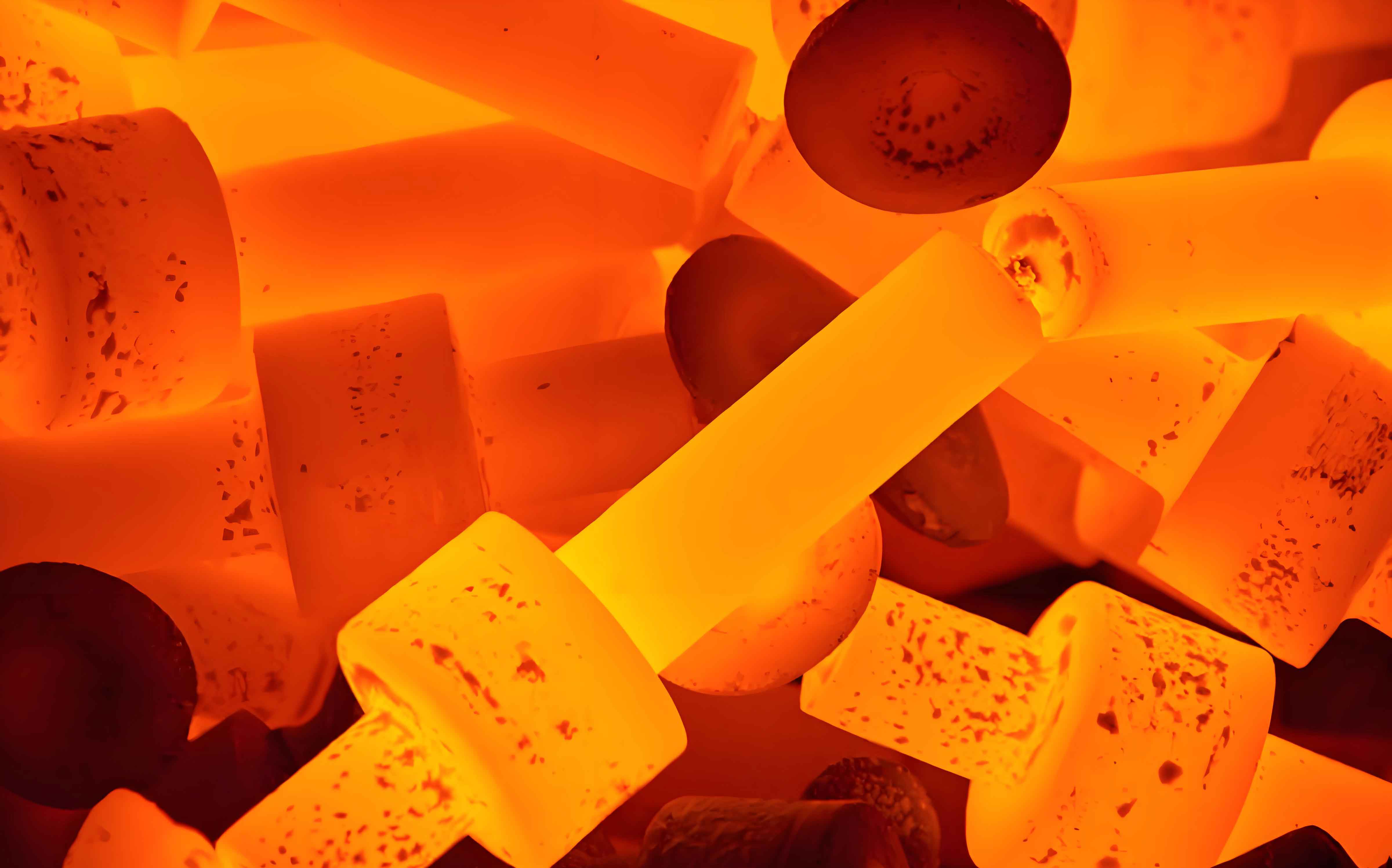As global vehicle ownership exceeds 217 million units, the quality of automotive components becomes critically important. Piston pins serve as crucial connectors between pistons and connecting rods, functioning as double-point support beams that endure asymmetric alternating loads. Surface wear constitutes their primary failure mode, though fractures occasionally occur. Implementing optimized heat treatment significantly enhances durability by controlling microstructure and residual stresses. This article details comprehensive processing methodologies and addresses prevalent heat treatment defect mitigation strategies for 20Cr steel piston pins.

Processing Routes for Raw Materials
Material form dictates distinct machining sequences prior to thermal processing:
| Material Type | Processing Sequence |
|---|---|
| Hot-rolled round steel | Rough turning → Drilling → Carburizing → Quenching/tempering → Grinding |
| Cold-rolled round steel | Drilling → Carburizing → Quenching/tempering → Grinding |
| Hot-rolled seamless tube | Rough turning → Carburizing → Quenching/tempering → Grinding |
| Cold-drawn seamless tube | Cutting → Carburizing → Quenching/tempering → Grinding |
Critical note: Drilling precedes carburizing for solid billets to enable inner-hole hardening, generating compressive residual stresses that inhibit crack initiation.
Carburized Layer Quality Control
20Cr steel exhibits susceptibility to coarse carbide formation during carburization due to chromium’s affinity for carbon. Excessive surface carbon concentration (>1.15%) promotes blocky or networked carbides that embrittle surfaces. Control parameters follow:
$$ C_{max} = 0.85\% \quad \text{(Final surface carbon)} $$
$$ D_{diff} = 1.60 \quad \text{(Diffusion coefficient)} $$
Optimized gas carburizing employs reduced peak carbon potential (1.25%) with extended diffusion periods to attenuate carbon gradients. Process parameters for 1.2mm case depth:
| Phase | Temperature (°C) | Duration (min) | Methanol (drops/min) | Kerosene (drops/min) |
|---|---|---|---|---|
| Heating | 930±10 | 60 | 160-180 | 200 |
| Carburizing | 930±10 | 180 | 160-180 | 120 |
| Diffusion | 930±10 | 120 | 160-180 | 80 |
| Cooling | 890 | – | 160-180 | 50 |
This protocol restricts carbide formation within grinding allowances while preventing interfacial embrittlement.
Double Quenching Methodology
Dual-phase quenching refines both core and case microstructures to enhance mechanical properties:
First Quench: Heat to Ac₃ + 30°C (≈860°C) → Oil cool
• Dissolves carbide networks in case
• Eliminates ferrite in core
• Enhances core strength
Second Quench: Heat to Accₘ – 40°C (≈780°C) → Oil cool → Temper at 200°C
• Refines prior austenite grains in case
• Increases surface hardness (60-64 HRC)
• Improves wear resistance
Thermal cycle timing:
$$ t_{hold1} = 15 \text{ min} \quad t_{quench} = \text{Oil} $$
$$ t_{hold2} = 15 \text{ min} \quad t_{temper} = 120 \text{ min} $$
Alloy-rich compositions may require cryogenic treatment post-quenching to minimize retained austenite.
Fatigue Life Enhancement via Inner Hole Carburizing
Unhardened inner surfaces exhibit tensile stresses (σ_max) at critical points C and D:
$$ \sigma_{max} = \frac{4F}{\pi (d_o^2 – d_i^2)} \left( \frac{d_o^2}{d_i^2} + 1 \right) $$
where F = load, d_o = outer diameter, d_i = inner diameter. Carburizing generates compressive residual stresses (-300 to -600 MPa) counteracting operational tensile stresses. Fatigue testing reveals:
| Surface Condition | Mean Cycles to Failure (×10⁶) |
|---|---|
| Outer surface only hardened | 2.8 |
| Inner and outer surfaces hardened | 4.7 |
This 68% fatigue life improvement stems from suppressed crack initiation at stress-concentrated inner surfaces.
Heat Treatment Defect Prevention and Remediation
Common heat treatment defect manifestations require systematic controls:
| Defect Type | Root Causes | Prevention | Remediation |
|---|---|---|---|
| Excessive carbides | Carbon potential >1.25%, Insufficient diffusion | Limit carbon potential, Extend diffusion time | 920°C diffusion anneal, Additional grinding |
| Low case carbon | Poor atmosphere circulation, Overloading | Optimize gas flow, Reduce charge density | Re-carburize if depth permits |
| Case depth deviation | Temperature fluctuations, Timing errors | Calibrate furnaces, Automate timing | Scrap if oversize, Re-carburize shallow cases |
| Surface decarburization | Slow cooling in air, Low carbon potential during reheating | Forced-air cooling, Protective atmospheres | Grind if within allowance, Scrap if excessive |
| Quench cracks | Material defects, Thermal shock | Ultrasonic inspection, Preheating | Scrap affected components |
Carbide-related heat treatment defect prevention relies critically on carbon potential modulation, while decarburization defects necessitate atmospheric controls.
Conclusion
Optimized 20Cr piston pin manufacturing requires: (1) Inner hole carburizing to induce compressive stresses, (2) Carbon potential control during carburizing (Cmax=1.15%) to prevent carbide networks, and (3) Double quenching for core/case property optimization. Systematic monitoring of temperature, timing, and atmosphere composition effectively mitigates heat treatment defect occurrence. Implementing these protocols enhances fatigue life by ≥68% while reducing scrap rates from thermal processing anomalies.
